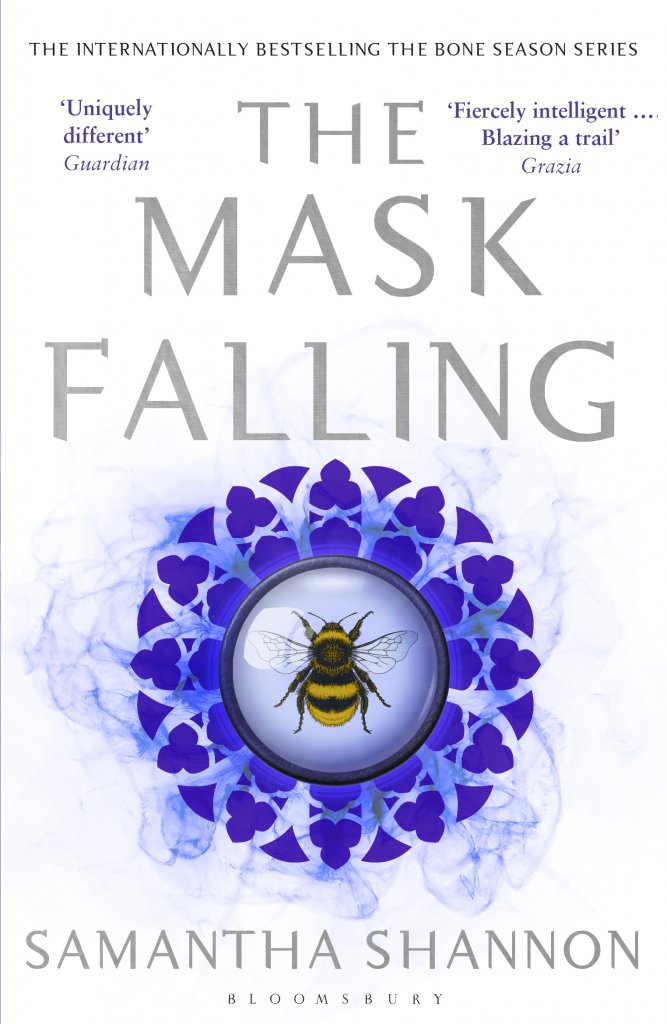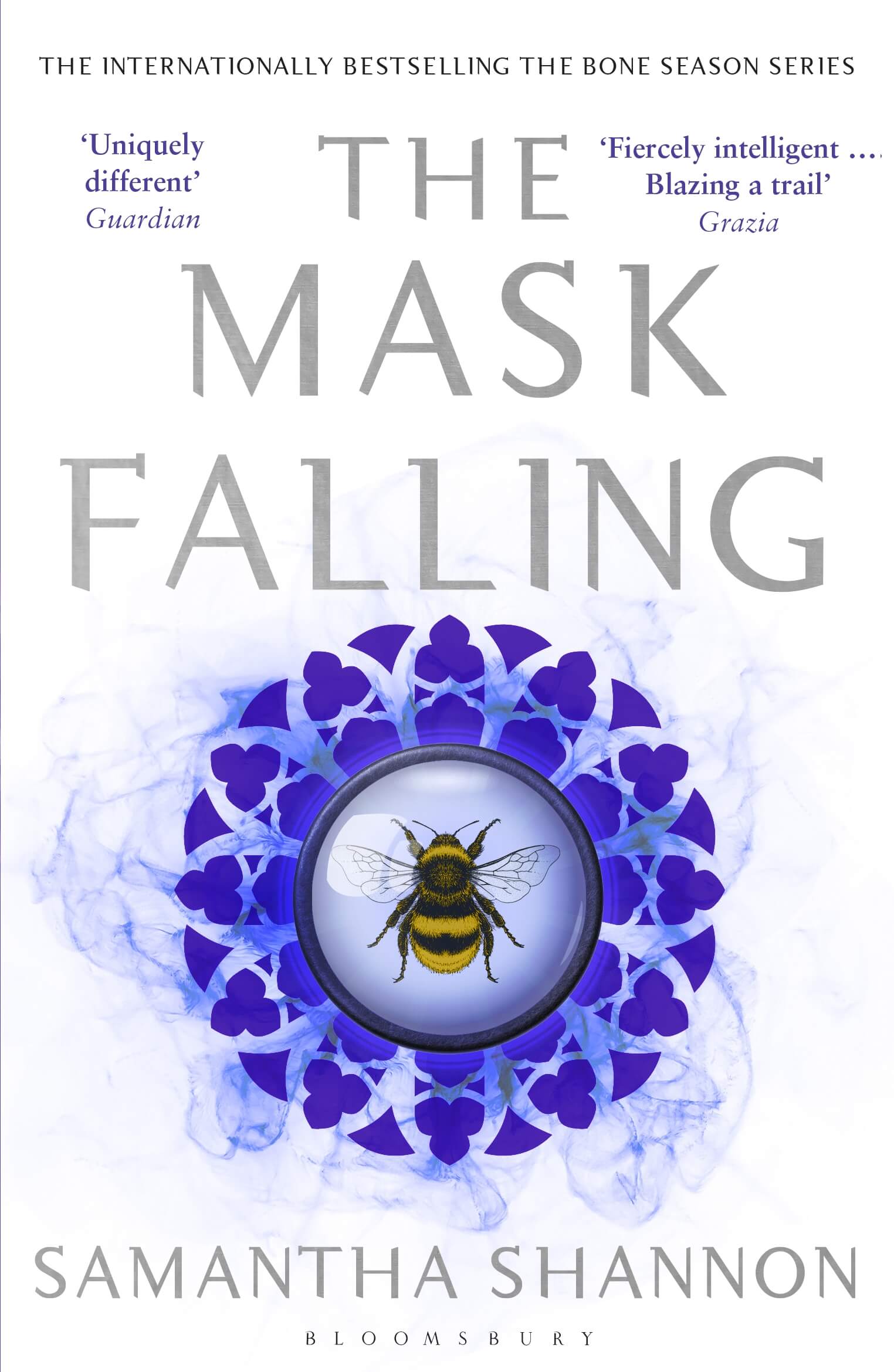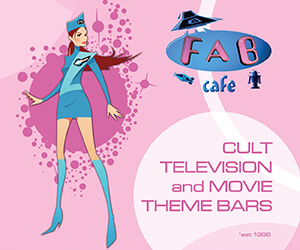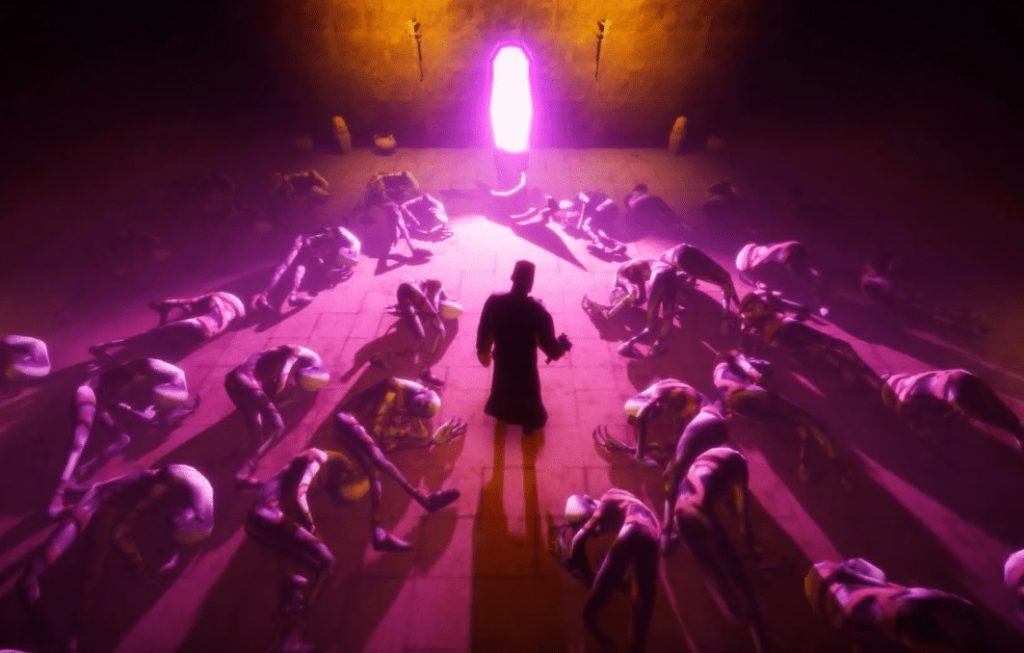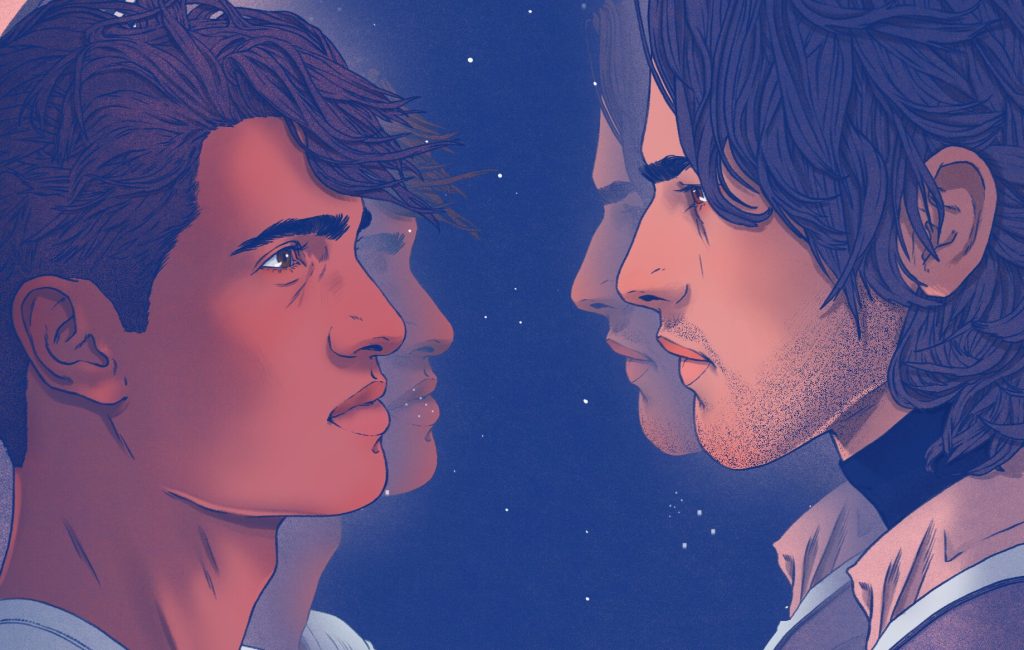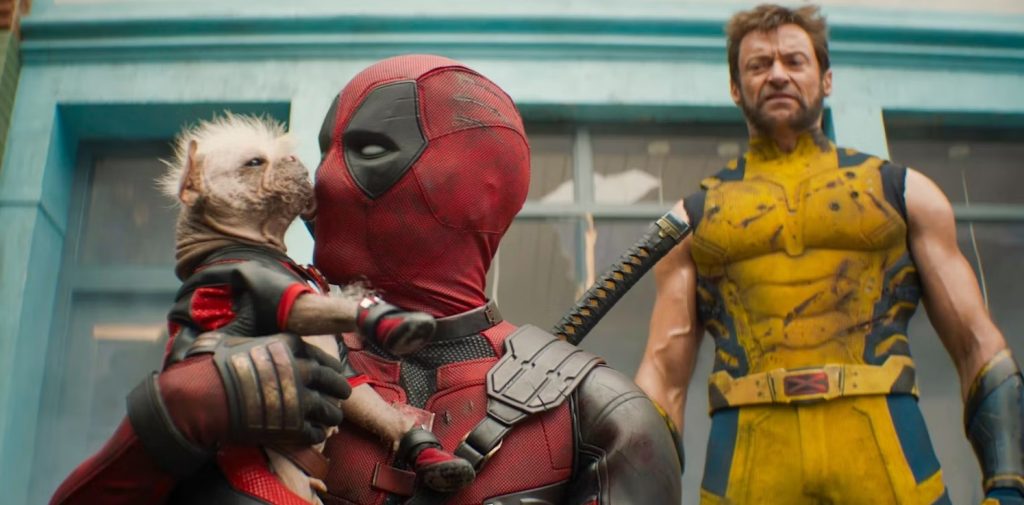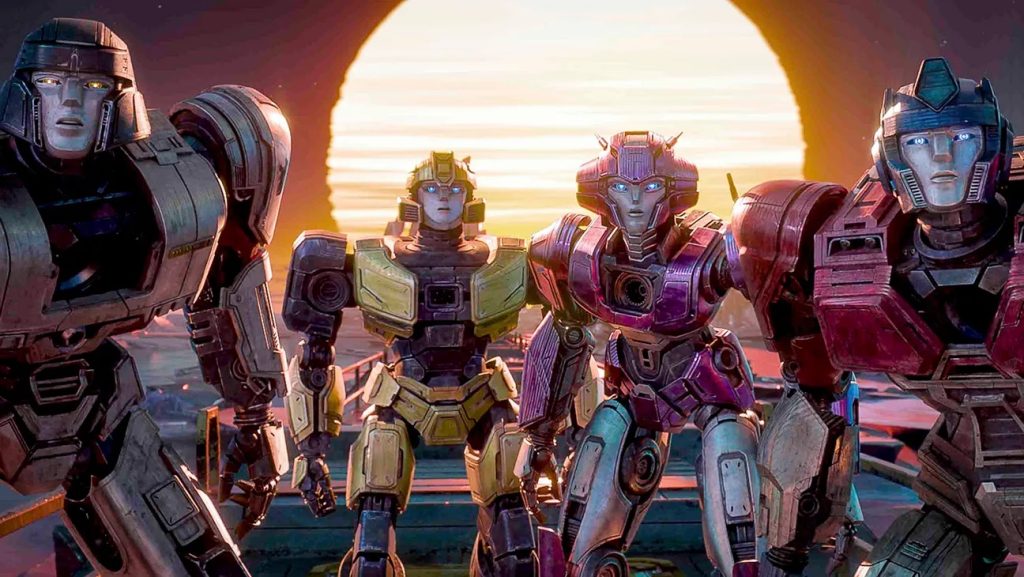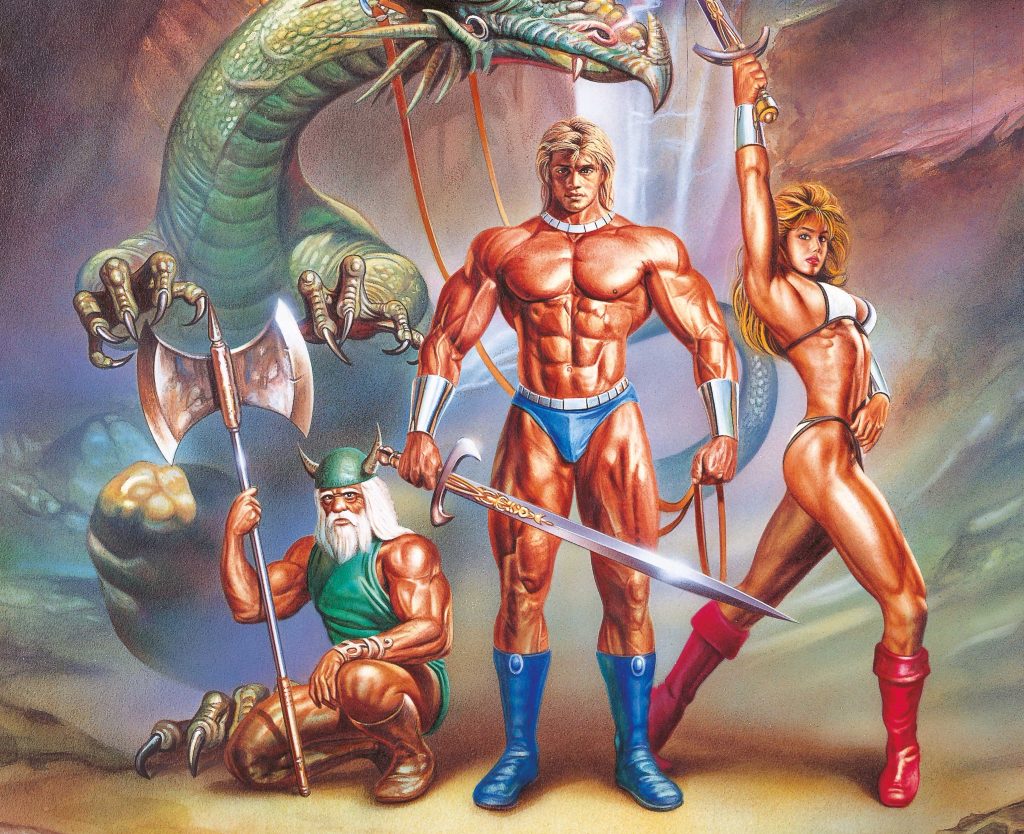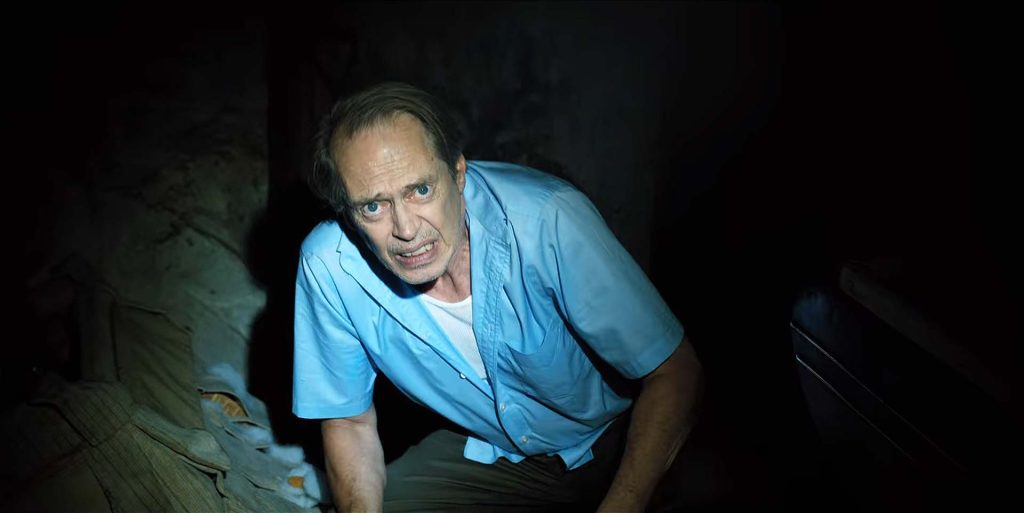Samantha Shannon is best known for her critically acclaimed novel The Priory of the Orange Tree. Her new book, The Mask Falling is out now via Bloomsbury Publishing. London Shah is the creative force responsible for the Light the Abyss duology, out now via Little Brown Young Readers.
The two caught up with each to discuss the heady world of writing (and also talk a bit about their new books), Starburst has been lucky enough to present the chat for your Friday reading pleasure.
Samantha: London, it’s lovely to be able to chat about your wonderful Light the Abyss duology. To begin, could you tell everyone what the series is about?
London: Thanks, Samantha, I’m so excited to be chatting with you like this! The Light the Abyss series began with The Light at the Bottom of the World and concluded recently with Journey to the Heart of the Abyss. It’s a Young Adult science fiction story set in the year 2099, when the world is submerged a thousand feet beneath the ocean’s surface.
In Book 1, our protagonist, sixteen-year-old Leyla McQueen, is on a quest to find her missing father. When she’s picked to participate in the prestigious annual London Submersible Marathon, she spies her chance to help him—the Prime Minister grants the champion their heart’s desire. Except the marathon doesn’t go to plan, and soon Leyla is forced to leave the safety of London and venture out into wilder waters for the first time in her life. As she navigates her own submarine through the unfathomable depths of Britain, battling both the oppressive authorities and the dangers of the deep, she discovers a world drowning in lies…
Samantha: I almost forgot how much happened in Light—it’s such a rollercoaster. How about the second book?
London: Abyss continues Leyla’s journey, taking her deeper and farther in every way, and all too soon her life is shockingly altered forever. Through twists and turns, she finally learns the full startling and devastating truth—about herself, her past, the boy who’s won her heart, and about their world. And she discovers exactly who and what the real threat to everyone is.
Samantha: The story is very well-executed; I could rarely predict what would happen next. Even more impressive in that it’s your debut series. What first inspired you to write about a flooded world?
London: It truly means so much to me that you think so, thank you. The beauty and surrealism of the setting are definitely what inspired me. I was fascinated—obsessed, actually: How might our world look if we all lived deep underwater? If our current world was very much still recognisable (as opposed to some unfamiliar fantasy setting) but we now existed on the seabed… City lights, submersibles zooming past, the shadows of submarines hovering way above, sea creatures drifting by and slipping in and out of ruins, and the rippled glow from homes that marked our existence. Imagine! I first started fantasising about such a world in my early teens.
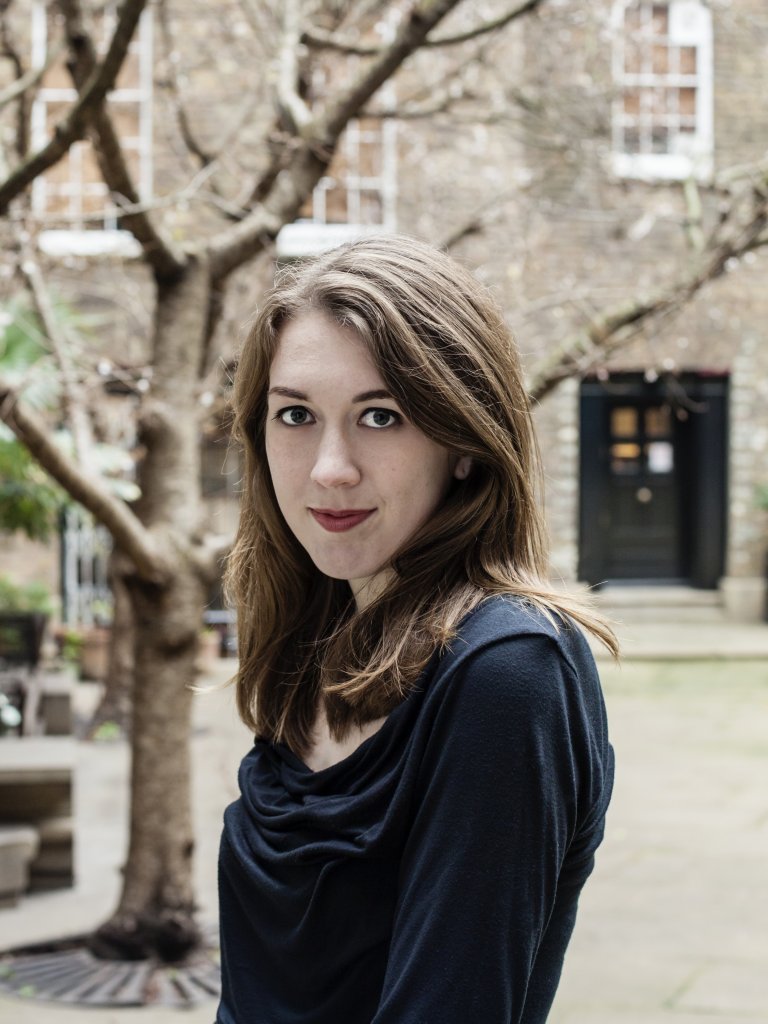
Samantha Shannon
Samantha: I’m not surprised the concept has stayed with you for years. Even as someone with a fear of the sea, I found it captivating.
London: That’s amazing; it’s always very encouraging to hear that from folk who have a fear of the sea, so thank you. I’m deeply honoured you’re a Light the Abyss fan. Yes, the sight of anything underwater, whether shipwreck, a person, ruins, or even boring infrastructure—it really didn’t matter what—always stirred such wonder and curiosity and would send me drifting off into my fantasy every time. I never envisioned any watertight domes; I wanted to still feel at home in my submerged world, a society as aesthetically close as possible to how we live here and now, except we were deep underwater. I’d especially see this submerged existence when looking out of a window. In all the years between that initial inspiration and my finally deciding to try and bring the vision in my head to life, the dream never waned, growing only more urgent and vivid with time.
Samantha: I love it when a setting is so real in your imagination that you can almost throw a mental switch and transpose it over the real world. I often get that when I’m walking through a city; I transfigure it into a Bone Season-style citadel in my head, and visualise it like a second layer of reality.
London: Yes, exactly that. And visualising any city Bone Season-style appears such a thrilling notion; I can only imagine how deeply exciting that experience always is for you! One of the things that struck me instantly as I began reading the series is that it has the most elaborate worldbuilding I’ve ever read. I’d really love to know when in the process the various layers came to you. The complexity of each one is inspiring—the level of creativity involved, and the attention to their construction: Scion London, the clairvoyants (all the different types and their abilities!), the many varied histories, your linguistical choices, and so on. All these are mind-bogglingly detailed (and I haven’t even touched on the beloved characters!) But then you also create a powerful other-worldly race in the Rephaim, and plant them in a secret Oxford…The skill involved with orchestrating it all blows my mind. As a reader, it’s incredibly exciting to stumble upon such an original, rich, and complex world. So please, enlighten me: Did you create each of these layers before drafting a single word, or did any of them come to you as you wrote? (If it’s the latter then you’re just not even human…)
Samantha: I’m so happy you’re a Bone Season fan. I did have most of the rough layers in my head from an early stage. I’m fortunate to have an excellent memory when it comes to my creations, so I don’t find it difficult to hold big, intricate worlds in my head. That allows me to stratify without losing track. (The Bone Season could probably have been two separate books, but I blended two large ideas into one, which is part of why it has so many delicate moving parts.) Having said that, I didn’t have every detail perfected from the beginning, and my ideas for the series have changed and developed over the ten years I’ve been working on it so far. To use a macabre analogy: I try to have the skeleton laid out from the beginning, but the flesh gathers on the bone as I work. I’ve been enriching each part of the Bone Season universe as I go, and my research often sparks fresh ideas. Scion Paris only took a firm shape when I started work on The Mask Falling, for example, as I was doing closer research on the city.
London: That’s amazing. And our processes are similar! I had the series skeleton, but by the time it came to drafting Abyss, I’d changed and developed several of my initial ideas for how I’d flesh it out. I remain in awe at how you manage to carry it all in your head, wow.
Samantha: On the subject of research, you clearly put a great deal of care into yours. The science of your books feels watertight (there I go with the puns again), and you often share intriguing facts about the ocean. How did you go about nailing down the details of a society forced deep underwater?
London: Coming from yourself, that’s a huge compliment, thank you. The Virgo in me meant approaching the research methodically. I started at the very beginning, focussing on here and now, and went through everything chronologically. I worked hard to understand, and to try and predict, how we might approach the sudden news of impending worldwide flooding; a disaster so catastrophic it would leave any survivors submerged deep beneath the waves. The challenges posed by such a drastically different environment would be pervasive and every aspect of society would need examining.
Before embarking upon any research, I thought long and hard about our current world and all the many ways—big and small—in which things would be done differently if it were water surrounding us instead of air. And then of course it’s one thing to reimagine the world, but if it hadn’t always been like that then there is even more to reckon with. I wondered if we could ever let go of the world as we currently knew it, and I had to consider how such a challenge might affect our psyche. And so my underwater world’s relationship with the pre-floods world required careful examination.
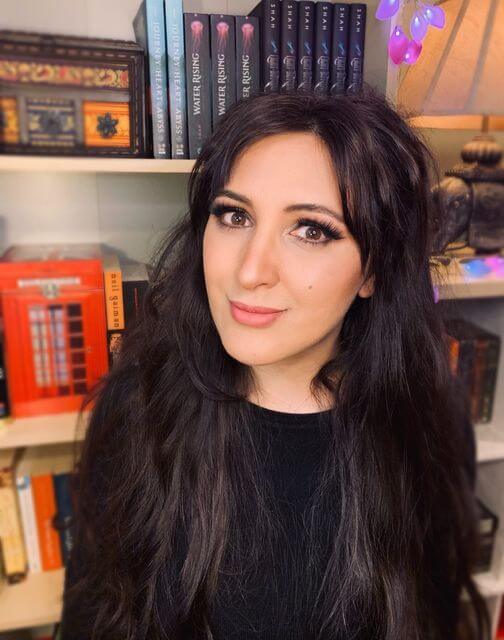
London Shah
Samantha: Of course. This is one of many reasons I admire sci-fi authors—you’re working within the realm of possibility, trying to predict how scientifically conceivable events would play out, unlike me, in my safe fantasy bubble. That must come with a degree of expectation that you’ll be accurate and precise, to the best of your ability. Theoretically, after all, the events of The Light at the Bottom of the World could happen.
London: Yes, exactly. And of course there’s no precedent for transformation on such a scale for humanity, so I had to seriously consider how such change could potentially impact our wellbeing. I came to the conclusion it wouldn’t be improbable for us to collectively suffer from some sort of malaise. The “seasickness” in my story-world is born specifically out of the people’s relationship to the submerged environment they’ve been thrust into. How would we adapt to this strange and overwhelming new world we found ourselves in? Would we, could we, change? And if not, how might our inability to move on alter our society at large? Suddenly that long-standing utopic underwater vision was becoming more real by the day, and as beautiful and thrilling as it was, it brought with it endless questions—so much to consider before I ever got around to plot. I read books on oceanography, spent countless hours on scientific websites and forums that discussed and predicted future technologies, watched as many deep-sea programmes as possible, chatted with marine biologists and oceanographers, and discussed specific scientific ideas with research scientists, and companies designing and manufacturing deep-sea vehicles. I even managed to persuade the CEO of a leading submersibles manufacturer to provide me with a mini tutorial via Skype; we covered all the basics of driving a submersible!
Samantha: That’s amazing.
London: I know, I got so lucky! And hopefully one day I’ll get to put those driving instructions to use for real; it’d be one of my earliest and long-standing dreams come true. I’m sure you’d agree, Samantha, when I say reimagining the world can be deeply challenging. You need to remain passionate, open-minded, and patient throughout. There were days when I’d wonder if I’d ever get around to writing the actual story.
Samantha: Absolutely. At some point, you have to decide you’ve done enough initial preparation and at least make a start on the book, or you’ll end up writing an encyclopaedia before you ever get to the novel. You can always continue to strengthen the foundations as you go, which I find to be the most efficient approach. I can do targeted research to answer specific questions that crop up during the writing process, which stops me falling down a rabbit hole.
London: I really should hang these words near my desk. So very true, especially about it being the most efficient approach! Those pesky rabbit holes aside, every bit of research is worthwhile. It might not make it into the story—most of it doesn’t, in fact—but it will inform you, and a more informed you makes wiser choices for your world. And the end result, when you sit back and observe your fully functioning world, is so gratifying. The knowledge that no place like it existed until you created it. It’s such a thrilling feeling! And you know for certain then that all the hours, all the many months spent researching, were more than worth it.
Samantha: There really is nothing like that feeling—standing back, taking a deep breath, and seeing what you made.
London: It’s the best. And now, because your own level of research for worldbuilding stuns me, I must know, Samantha: What part of the process is your favourite? If I had to guess, I’d have difficulty choosing between you delving into the history behind something, or exploring the language elements for your story? By the way, I’m left perpetually in awe by just how much thought and effort you put into utilising language in your storyworld. I especially loved your reinterpretation of words! If you could pick only one, what aspect of research gives you the most pleasure?
Samantha: You know me well! You’re right: historical and linguistic research are two of my favourite stages of the process. I’d say I narrowly prefer historical research—for all my adventuring through the realms of language, I often feel out of my depth in the shadow of master linguists like Tolkien. But I do get a lot of joy from creating names. (For those who don’t know, in The Priory of the Orange Tree I generally build character and place names from fragments of archaic, hypothetical and extinct languages, e.g. Gothic and Old English.) I also enjoy threading elements of reality into a fantastical setting, working out why and how historical events and situations might have occurred in a mirror universe.
London: See, this is what I mean…The sheer dedication in your approach to every aspect of research is just mind-blowing. I’m always awed by how you navigate and master so many complex parts. And I agree about placing real-world details into a fantastical setting—analysing them from (usually) such a vastly different perspective is always so exciting.
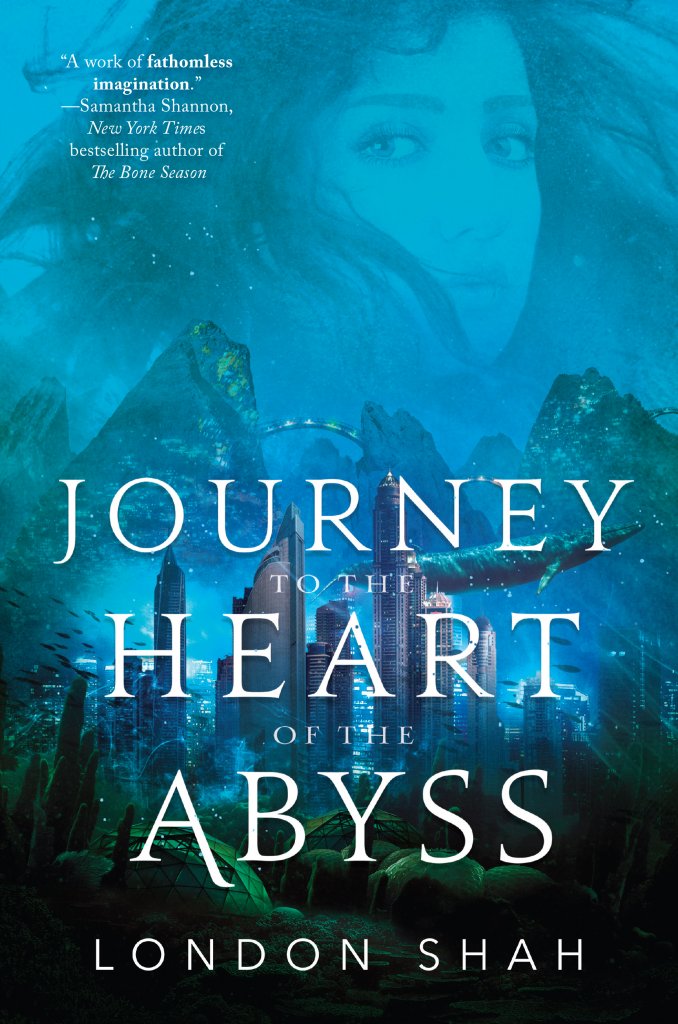
Samantha: It is. Going back to your research for a moment—you often share intriguing facts about the ocean. What’s your favourite sea creature and why?
London: The blue whale. Everything about it blows my mind. I’d lose all sense if I were ever on a boat and spotted one. I can’t imagine a scenario where I’m blessed enough to be near one, and I stay onboard. I’m jumping in. Imagine if we could hold onto one and go explore the depths of the world like that…The biggest animal ever known to exist on Earth (larger even than any dinosaur!) It can grow up to 33 meters long and can weigh up to 200 tonnes. Its tongue alone weighs about as much as an elephant. Its heartbeat can be heard from up to 3 miles away. And no natural predators, wow. It’s also the loudest creature; blue whales can communicate with another whale up to 1000 miles away…Imagine shouting from London, UK and someone in Belgrade, Serbia can hear you! An animal that size, and yet it feeds simply on plankton?! Wow, they’re remarkable. Such elegant creatures, leading their peaceful, quiet, and modest lives. How blessed we are to live in a time when the planet carries such a species in its watery belly. It never fails to astound me that they’re here with us today.
Samantha: They are beautiful. I remember being awestruck by the model in the National History Museum when I was little.
London: Same! It took my breath away when I first saw it. I’d like to know what you’d choose if you could have any one of the animals featured in your books, as a pet? While your dragons are definitely spectacular, my favourite creature from your works is the splendid ichneumon from The Priory of the Orange Tree.
Samantha: I’d find it hard to choose between them—a dragon would be the equivalent of a private jet—but ichneumons are lovely. I’ve been able to spend more time with them in the prequel to Priory. They imprint on the first person to feed them solid food, and will follow their imprintee anywhere. They can be cuddly, like giant teddy bears, but will also defend their pack and their imprintee to the death. They’re also calm and blunt in a way that can be quite funny.
London: I want my own ichneumon more than ever now. And yes, a dragon would be a very powerful creature to have on your side!
Samantha: What’s your favourite thing about the underwater world you created in the duology?
London: Interesting question…I think what’s most heartening for me about the Light the Abyss world is the fact that despite the added factors of research and plot, and their respective challenging journeys, I managed to stay true to my original decades-old feelings about such an environment. How even when the ideas took a dystopian turn as I brought the underwater society to life, I remained faithful to my teen fantasy of a magical and surreal submerged world. There’s control and terror, pain and confusion, and yet the setting beats with my teen heart, with all the awe and endless curiosity I’ve always had for this world. I love how the emotional aspect of it is almost a time-capsule; it feels like a part of my teen self, complete with the ceaseless wonder and fearful anticipations of that age. Everything I’ve always been fascinated and terrified of when envisioning us existing in the deep, flowed into the story. I was finally able to fully realise those sensations, explore the visions that had forever stirred such strong reactions in me. And that’s my favourite thing about the world I’ve created—I feel I never lost what inspired me in the first place and compelled me all these years since to keep the dream alive.
Samantha: I love how passionate you are about it. It shines all the way through the story.
London: Thank you! If you asked me what I love most about the Bone Season series, I’d have a very hard time choosing. But I have, with great difficulty, narrowed it down. There’s the scope (the sheer layers you added will never fail to astound), Paige and Arcturus (my favourite pairing of any book ever), and this strange and yet utterly believable London you presented to us. And so I can’t not ask you the same question, specifically regarding the Bone Season series, please. Urban fantasy is the sub-genre that excites me the most, and everything in this series is endlessly thrilling to me. So I’m really intrigued: What’s your favourite thing about the entire Bone Season world?
Samantha: Thank you. I’ll start with the caveat that not all of the Bone Season world is of my own creation; often I’m drawing from real or former places, or from myth, so I can’t take credit for inventing them. In fact, the series is a broad reimagining of the Greek tale of Prometheus and Pandora, which is an element of it I love—I’m trying to use the myth in subtle ways a reader might not expect. Another part I’m looking forward to exploring in more depth is the Netherworld, which we haven’t seen in the books yet, and acts as both a cradle and a melting pot of human myth. I’m looking forward to exploring it—in Book 6, perhaps. But most of all I love developing the relationship between Paige and Arcturus. I’ve always been fascinated by the thought of a complex bond between an immortal and a mortal that unfolds over a few years, and what challenges, pitfalls and joys that would bring, especially when there is no solution to one of them having a fleeting life. I put a lot of thought into where their thoughts and actions would be similar or different, where they would butt heads and where they would find common ground. It’s such a privilege to be able to interrogate that subject, and follow these characters, across seven instalments.
London: Ooh, I’m really looking forward to a closer look at the Netherworld. It sounds riveting! My mind’s throwing up all kinds of scenarios now. Yay, I’m thrilled you picked dear Paige and Arcturus as your favourite part of the Bone Season world. What a fascinating and endearing pair. I’d follow them anywhere. Ack, anytime you speak about the series, it just makes me really impatient for the next instalment!
Samantha: I’ve loved following your characters, too—Leyla, Ari, Oscar, Hashem, and, of course, Jojo. Leyla is such a resilient and hopeful protagonist. When did she first come to you?
London: Leyla came to me the moment I realised I was going to write the story. Her nature was instant and nothing changed there during the entire process. However, Leyla was originally Lola! I hadn’t intended to write a South-Asian Muslim protagonist; it just never presented itself to me as an option and I’d always assumed my main character would be white and non-Muslim. It wasn’t until I joined the Twitter writing community and was exposed to the conversations around diversity that were taking place specifically in the YA sector of publishing, that I slowly began to realise I didn’t have to write a white main character. And still I took baby steps…Lola became Leyla and I naively decided she would be biracial—Pashtun and English. The hesitance to have her fully Pashtun came from what I’d always read myself, solely due to what was available on the shelves of bookshops and libraries—most especially in SFF. The UK publishing industry is leagues behind the US when it comes to accepting POC leads in SFF.
Samantha: Yes—the more strides the US side of the industry makes, the more glaring the UK’s failure to publish (and, crucially, support) authors of colour is shown to be in comparison. The statistics are appalling.
London: It’s definitely a depressing reality, one that’s impossible for a POC creator who writes SFF to ignore…Once I began following the conversations around diversifying our bookshelves to provide wider and more authentic representation, I went constantly back and forth in my head about whether to have my protagonist white, biracial, or fully ethnically Pashtun. I knew the story’s reception would be very different if I went with the latter, especially in the UK (and this was proven true during my querying process, when I had to turn to US agents), but knowing the chance to represent Pashtuns was there, I couldn’t not grab it. Somebody has to take those first tentative steps, and just as so many of my fellow writers have done with their own respective marginalised identities, I looked beyond how I suspected the story might be received by the industry, to what it would mean for teen readers. And that is how Lola became Leyla, an ethnically Pashtun teen girl born to Pashtun parents. Her nature never changed; that was cemented from her inception.
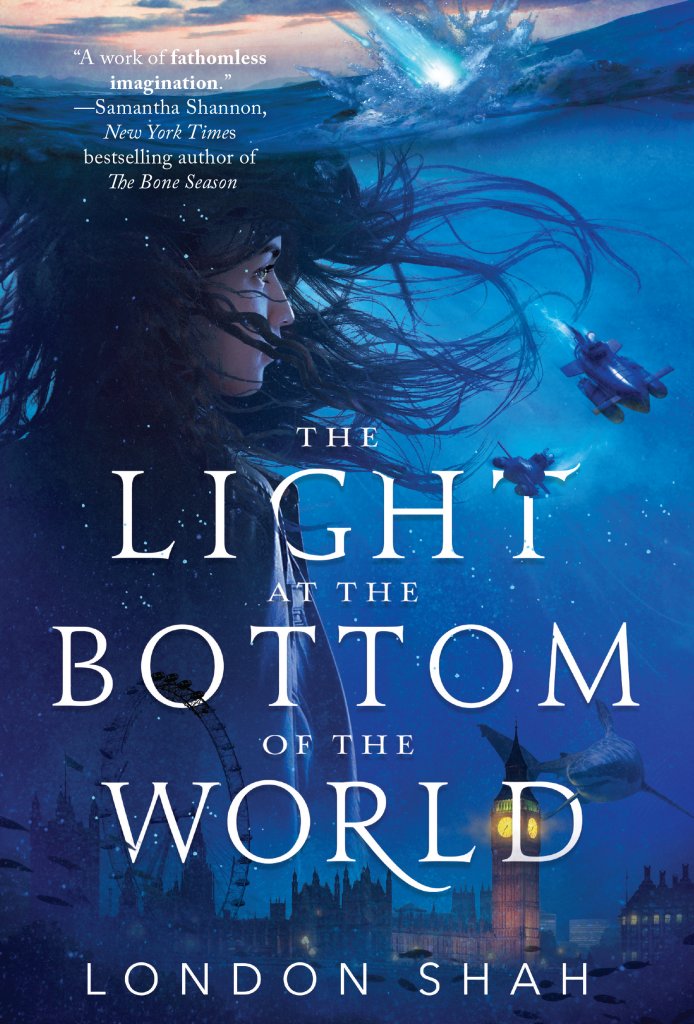
Samantha: I’m really glad you felt able to take that step, and it was wonderful that you dedicated The Light at the Bottom of the World to Pathan readers. I hope a UK publisher will pick the books up soon—they’re missing out on the brilliance of Leyla McQueen. What do you love most about her?
London: Thank you. There’s so much to adore about Leyla. I’m especially moved by how open she is to change, a trait all the more admirable considering her relatively sheltered upbringing. I don’t want to potentially spoil things for the reader, so I’ll just say the Leyla we meet at the beginning of the story is, in some respects, very different to who she is by the end of the series. Her determination to see things as they really are, and to allow those truths to change her outlook on life, enable her to grow and move forward. This is one of the things I love most about her.
Samantha: Me, too. Often in this genre you understandably see quite hardened, suspicious characters, but Leyla’s candour and optimism are refreshing qualities in a dystopian world.
London: I’m so happy you think so. Actually, I saw a lot of Leyla in Paige! (Similarly, I saw a lot of Ari—a main character in book one, for those who haven’t yet read it—in Arcturus.) It was a constant thought as I read the Bone Season books. Paige and Arcturus many times struck me as older and more mature versions of Leyla and Ari. Leyla and Paige are both selfless, grounded, vulnerable, strong, trusting to a fault, earnest, determined, difficult to keep down, and can’t walk away from a bad situation without trying to help. Arcturus and Ari are both sincere. They’re protective of the ones they love but not in an overbearing way, always remaining considerate, gentle, and fully accepting of them. So it’s no surprise I fell in love with both Paige and Arcturus. I’d love to know how Arcturus Mesarthim (my favourite fictional male ever) came to you? And whether anything major about him changed between his inception and the final version of book one?
Samantha: I agree! Paige does share all those qualities with Leyla—she tries to learn and grow from her experiences, too—and Ari is such a sweetheart. He’s exactly the sort of gentle male lead I strive to write, who doesn’t smother his love interest. There’s a bit of background to my passion for that sort of character, which also happens to answer your question. Arcturus went through an enormous change between inception and The Bone Season. I created the earliest version of him, a sort of proto-Arcturus, for my unpublished first novel, Aurora. The love interest in Aurora resembled the present Arcturus physically and shared a name with him, but he was jealous and possessive and angry, because when I was a teenager I’d absorbed the harmful idea that men were supposed to dominate women, and that jealousy in relationships was sexy. Essentially, I thought toxic masculinity was the ideal.
London: Ugh yes…I think we’ve all been there. We were sold the idea so extensively, and for so long, it’s no wonder it was acceptable to us, and felt completely normal.
Samantha: Yes, reading back on it is disquieting—it couldn’t be more at odds with who I am now, and I often worry about how close I might have come to a dangerous relationship. When I finally broke free of that mindset, I decided to rebuild Warden into a character who was the opposite of his original incarnation, almost a rebuke to him: gentle, solicitous, never possessive, allowing Paige to thrive, supporting her without clipping her wings. So I really appreciate Ari, on a personal level. I love gentle men in fiction.
London: Aw, you rescued him in a way (is it disturbing that I’m suddenly jealous?) And hard same: There’s nothing quite like kindness in a person, to endear us to them. Human tenderness is so beautiful to witness, and can be such a captivating trait in men.
Samantha: Who is your favourite secondary character in the series?
London: Oh, that has to be Leyla’s Navigator, Oscar Wilde, her submarine’s onboard AI. I’ve always loved the real Oscar Wilde, so he was the perfect choice for Navigator. Oscar’s character allowed me also to indulge in one of my favourite things—juxtaposing two very different aesthetics. His old-fashioned manner is wonderfully surreal and refreshing in a submarine at the bottom of the world in 2099. As per the real personality, his character is very loving but when irked we see a subtle snarky tone, and I had great fun with him. I can picture him on board the Kabul (Leyla’s submarine) as clearly as if the scene were before me now.
Samantha: He was such an unexpected addition to the story, and I agree that his style was a great counterweight to the cold, sleek aesthetic you often see in futuristic sci-fi. (I tried to do something similar with the clairvoyant leaders in London, giving them a bit of panache.) Of course, your series as a whole warns us against too much nostalgia—specifically the toxic variety, where the romanticisation of the past is used to stifle the present and future—but to me, Oscar is a sign that it is possible to remember our history without it keeping us from moving forward.
London: Yes, Leyla choosing a person from the past was a deliberate choice. There is nothing wrong with nostalgia, of course; it’s only when it becomes toxic that it poses a problem. Leyla remains very respectful of the past and those gone before her. She just refuses to lose herself trying to relive a bygone time. I really love her relationship with Oscar. In hindsight, I can see that I gave him a family. I wanted him to have a safe place; somewhere he was loved and respected. It pains me greatly how the real man was treated. There’s such a forlorn look about him in pictures, a dull sadness in his gaze, and it’s heart-breaking. I think that’s also why I gave my own Oscar as much agency as I could without taking from Leyla’s. I didn’t want an intelligence that merely took orders. The real man himself was never about that. Speaking of characters we adore, if you could spend the day with only one character from the Bone Season series, who would it be, and why?
Samantha: Oh, Arcturus, unquestionably. I had to fall in love with him myself so that Paige could. He’s the character who’s been in my head the longest, since I was fifteen. That’s half my life. I’d give anything to spend a day chatting about books or going to the theatre with him or listening to him play music. If I could pick one of yours, it would be Leyla—I’d like some of her positivity!
London: Aw, she’d love you! And I’m afraid there’s just no conceivable scenario in which Arcturus is visiting you for the day and I don’t make a random—purely coincidental!—appearance. We must obey the laws of the universe.
Samantha: He’d be delighted to meet you. It seems appropriate for my final question to be about the big finale of Journey to the Heart of the Abyss, which was pulse-pounding. Do you enjoy writing action and battle scenes? (I really don’t, but you’re very good at it!)
London: Wow, thank you. And I’m always very surprised to hear you don’t enjoy creating your action scenes so much—they’re spectacular! That entire scrimmage scene in The Mime Order (reader, you might want to look away now if you haven’t yet read it!) when Paige fights various others to determine the next Underlord/Underqueen, really sparked. That’s one of my favourite action scenes ever; I felt every blow and was quite exhausted by the end!
Samantha: Thank you—that means a lot. I’m pleased with the result, but I hated every second of writing it.
London: Well, you’d never know! If I could pick only one type of scene I love most, I think it would be the quieter, more reflective ones. Those moments that require the organising and processing of emotions and facts, the subsequent journey to deeper understanding, and then determining the character’s next move as a result. But yes, I actually do enjoy writing the action and battle scenes due to their structural nature. The main sequences involved provide me with a clearer map for the scene.
Samantha: I can’t wait to read more of both kinds of scenes from you.
London: Thank you. As a huge fan of your work, I strongly feel the very best way to bring this chat to a close is by you honouring us all with a titbit regarding TBS5. The people demand a Samantha Shannon exclusive on the next instalment of the Bone Season series…Pleeeease.
Samantha: Ha, okay. I feel dreadful after that cliffhanger! I really can’t say much at this stage, but each Bone Season book is its own genre, and so far this is shaping up to be the roadtrip book. It’s the first book in the second arc of the series, larger in scope than any of the previous instalments. Paige travels further than she ever has, decides on her place in the war against Scion, and finds herself a long way out of her comfort zone. She’s also about to face her most formidable opponent yet. Some old friends return to the series at this point, along with some interesting new characters, and I’m inching closer to the big secrets at the heart of The Bone Season, which is very exciting.
London: Oh my gosh. A roadtrip…And larger in scope than the others (how’s that even possible?!) I now feel compelled to utter a little pre-emptive, “Poor Paige”. And big secrets…I’m so excited! Having a poor memory is sometimes a blessing, and I’m really looking forward to my re-read of books 1-4 in time for the fifth instalment. Thank you so much for sharing that with us. It’s been so great chatting with you, Samantha, and discussing the Light the Abyss series with you. I’ve enjoyed it tremendously. And of course, getting to delve a little deeper into your brilliant work—such a privilege. Please take care of Paige and Arcturus!
Samantha: I’ve loved this chat so much, too! Congratulations on such a groundbreaking and fascinating duology, London—you’ve worked so hard on it, and I can’t wait for more readers to join Leyla, Oscar and the rest of your intrepid heroes on the Kabul. The abyss is waiting . . .
